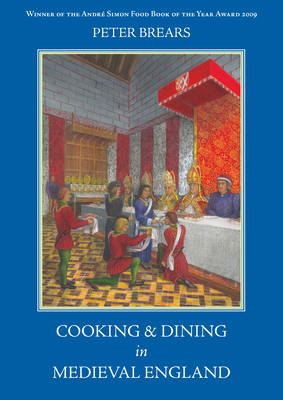
Bedankt voor het vertrouwen het afgelopen jaar! Om jou te bedanken bieden we GRATIS verzending (in België) aan op alles gedurende de hele maand januari.
- Afhalen na 1 uur in een winkel met voorraad
- In januari gratis thuislevering in België
- Ruim aanbod met 7 miljoen producten
Bedankt voor het vertrouwen het afgelopen jaar! Om jou te bedanken bieden we GRATIS verzending (in België) aan op alles gedurende de hele maand januari.
- Afhalen na 1 uur in een winkel met voorraad
- In januari gratis thuislevering in België
- Ruim aanbod met 7 miljoen producten
Zoeken
Omschrijving
The history of medieval food and cookery has received a fair amount of attention from the point of view of recipes (of which many survive) and of the general context of feasts and feasting. It has never, as yet, been studied with an eye to the real mechanics of food production and service: the equipment used, the household organisation, the architectural arrangements for kitchens, store-rooms, pantries, larders, cellars, and domestic administration. This comprehensive work by Peter Brears, perhaps Britain's foremost expert on the historical kitchen, looks at these important elements of cooking and dining. A series of chapters looks at the cooking departments in large households: the counting house, dairy, brewhouse, pastry, boiling house and kitchen. These are illustrated by architectural perspectives of surviving examples in castles and manor houses throughout the land. There are chapters dealing with the various sorts of kitchen equipment: fires, fuel, pots and pans. Sections are then devoted to recipes and types of food cooked. The recipes are those which have been used and tested by Peter Brears in hundreds of demonstrations to the public and cooking for museum displays. Finally there are chapters on the service of dinner and the rituals that grew up around these. Here, Peter Brears has drawn a strip cartoon of the serving of a great feast (the washing of hands, the delivery of napery, the tasting for poison, etc.) which will be of permanent utility to historical re-enactors who wish to get their details right. The hardback of this book was first published in 2008. It is the first book in a mini-series by the author examining the history of cooking and dining in England.
Specificaties
Betrokkenen
- Auteur(s):
- Uitgeverij:
Inhoud
- Aantal bladzijden:
- 560
- Taal:
- Engels
Eigenschappen
- Productcode (EAN):
- 9781903018873
- Verschijningsdatum:
- 1/05/2012
- Uitvoering:
- Paperback
- Formaat:
- Trade paperback (VS)
- Afmetingen:
- 173 mm x 246 mm
- Gewicht:
- 1020 g

Alleen bij Standaard Boekhandel
+ 118 punten op je klantenkaart van Standaard Boekhandel
Beoordelingen
We publiceren alleen reviews die voldoen aan de voorwaarden voor reviews. Bekijk onze voorwaarden voor reviews.









